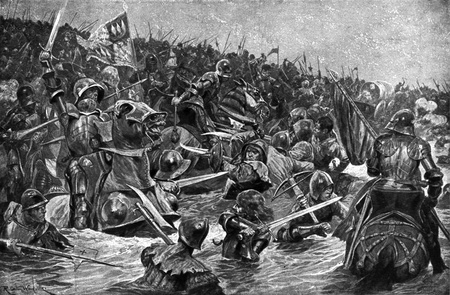29th March 1461
This soldier had survived battle before.
But at Towton he was not so lucky.
A closer look at the wounds this man received that cold Palm Sunday at Towton revealed:
"A healed skull fracture points to previous engagements. He was old enough—somewhere between 36 and 45 when he died—to have gained plenty of experience of fighting. But on March 29th 1461, his luck ran out. Towton 25 suffered eight wounds to his head that day. The precise order can be worked out from the direction of fractures on his skull: when bone breaks, the cracks veer towards existing areas of weakness. The first five blows were delivered by a bladed weapon to the left-hand side of his head, presumably by a right-handed opponent standing in front of him. None is likely to have been lethal.The next one almost certainly was. From behind him someone swung a blade towards his skull, carving a down-to-up trajectory through the air. The blow opened a huge horizontal gash into the back of his head—picture a slit you could post an envelope through. Fractures raced down to the base of his skull and around the sides of his head. Fragments of bone were forced in to Towton 25's brain, felling him. His enemies were not done yet. Another small blow to the right and back of the head may have been enough to turn him over onto his back. Finally another blade arced towards him. This one bisected his face, opening a crevice that ran from his left eye to his right jaw. It cut deep: the edge of the blade reached to the back of his throat."
What I am getting round to is sometimes we need to realise just how horrific medieval warfare was without looking at it through rose coloured glasses.
When I do it makes me want to cry!
In the link attached, Christopher Maudsley helps us see the reality of medieval warfare by featuring Towton 25 and his fellow warriors.
https://www.flickr.com/photos/christopher_maudsley/sets/72157633310702191





 RSS Feed
RSS Feed
